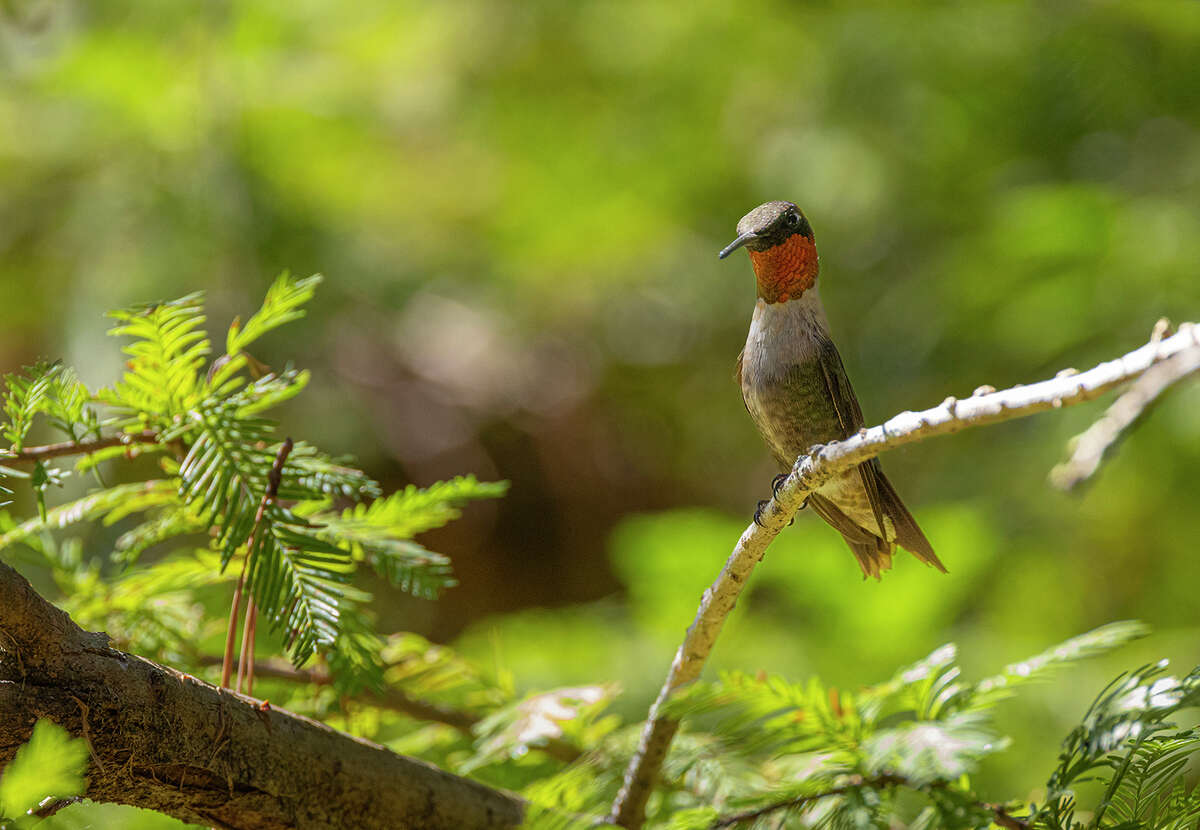Hungry ruby-throated hummingbirds migrate through Houston on the way to breeding grounds
Gary Clark, Correspondent
March 16, 2023
 1of4Ruby-throated hummingbirds are returned from their wintering homes in Latin America. Photo Credit: Kathy Adams Clark. Restricted use.Kathy Adams Clark/Kathy Adams Clark/KAC Productions 1of4Ruby-throated hummingbirds are returned from their wintering homes in Latin America. Photo Credit: Kathy Adams Clark. Restricted use.Kathy Adams Clark/Kathy Adams Clark/KAC Productions 
Resplendent ruby-throated hummingbirds hanging around our neighborhoods last September are returning from their winter homes south of the border from Mexico to Costa Rica.
Except this time, they won’t loiter in our yards. They’ll instead be in a hurry to reach breeding homes from East Texas and throughout the eastern half of the U.S. That doesn’t mean we won’t see the tiny hummers because they must pause to eat after an exhausting 600-mile flight over the Gulf of Mexico from Mexico’s Yucatan Peninsula.
The implausibly energetic hummers will require urgent nourishment when they arrive this spring. They’ll zip into our yards to fatten up on insects while invigorating their highspeed wingbeats from nectar-rich spring flowers and sugar water in hummingbird feeders.
Hummers can tell the difference between day-old and two-day-old nectar flowers, and they remember fields and backyards with abundant flowers. They’ll also recall people’s yards with hummingbird feeders.
Although it looks like hummingbirds suck nectar, they don’t. Instead, hummers poke their thin beaks into flowers or feeders while their tongues extend and retract through the beak up to 15 times per second to lap up nectar, like a cat lapping up water.
Ruby-throated hummers measure about 3 ½ inches long and weigh less than a nickel, but they’re unbelievably tough. The heart, breast and flight muscles account for 30 percent of their body mass, proportionately larger than any other bird. What gives hummers uncanny smarts is a brain accounting for 4.2 percent of their body weight, and the brain is also proportionately larger than any other bird.
Ruby-throated hummingbirds
About 350 species of hummingbirds live in North, Central and South America.
At least 15 species breed in North America, but ruby-throated hummingbirds are the only species breeding east of the Rockies.
They’re also the ones that migrate in large numbers through our area in fall and spring.
In flight, their wings beat in a figure-8 pattern at more than 50 times per second.
They devour hordes of insects for protein but must lap up sugar water or flower nectar about every 15-minutes to maintain energy.
Gardeners can attract hummingbirds with nectar-producing plants like shrimp plants, salvia and penstemons.
Plants also draw insects that nourish hummers, so avoid using pesticides in gardens.
Fill hummingbird feeders with one-part white table sugar to four parts tap water.
COLLAPSEMeanwhile, males dazzle us with their pulsating fiery red throats meant to attract females for breeding. Yet the radiant red color doesn’t derive from pigmented feathers but is an optical illusion created by the throat’s complex feather structure bending light like a prism to refract the red spectrum of light.
Females have a mere grayish throat.
The sole job of a male is to breed. He sets up a territory, attracts a female, mates with her, perhaps offers a little help for nest building, and then goes away. He usually mates with other females but is afterward finished with breeding duties.
Females are left to finish building a thimble-sized nest in the fork of twigs and camouflaged in lichens, moss or other vegetation. She alone feeds and raises the chicks.
https://www.houstonchronicle.com/lifestyle/home-garden/article/return-of-hummingbirds-17839225.php?sid=59a6f76b24c17c0f2e5c8edd&utm_source=newsletter&utm_medium=email&utm_content=news_a&utm_campaign=HC_MorningReport |





 1of4Ruby-throated hummingbirds are returned from their wintering homes in Latin America. Photo Credit: Kathy Adams Clark. Restricted use.
1of4Ruby-throated hummingbirds are returned from their wintering homes in Latin America. Photo Credit: Kathy Adams Clark. Restricted use.
